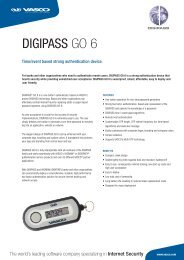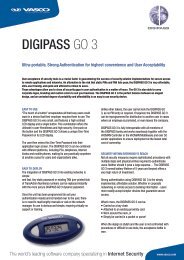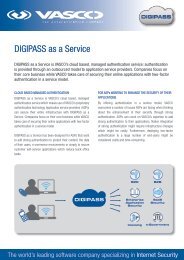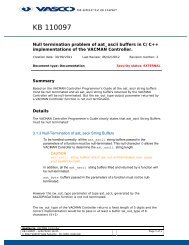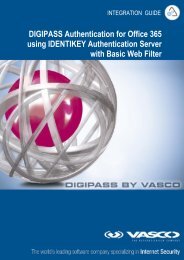Annual Report 2009 (1 MB, pdf) - Vasco
Annual Report 2009 (1 MB, pdf) - Vasco
Annual Report 2009 (1 MB, pdf) - Vasco
You also want an ePaper? Increase the reach of your titles
YUMPU automatically turns print PDFs into web optimized ePapers that Google loves.
of PCS agreements is based on separate sales transactions on a worldwide basis. In sales arrangements where<br />
VSOE of fair value has not been established, revenue for all elements is deferred and amortized over the life of<br />
the arrangement.<br />
We recognize revenue from sales to distributors and resellers on the same basis as sales made directly<br />
to customers. We recognize revenue when there is persuasive evidence that an arrangement exists, delivery has<br />
occurred, the fee is fixed or determinable and collection of the revenue is probable.<br />
For large-volume transactions, we may negotiate a specific price that is based on the number of users<br />
of the software license or quantities of hardware supplied. The per unit prices for large-volume transactions are<br />
generally lower than transactions for smaller quantities and the price differences are commonly referred to as<br />
volume-purchase discounts.<br />
Allowance for Doubtful Accounts<br />
We maintain allowances for doubtful accounts for estimated losses resulting from the inability of our<br />
customers to make payments for goods and services. We analyze accounts receivable, customer creditworthiness,<br />
current economic trends and changes in our customer payment terms when evaluating the adequacy<br />
of the allowance for doubtful accounts. The allowance is based on a specific review of all significant past-due<br />
accounts. If the financial condition of our customers deteriorates, resulting in an impairment of their ability to<br />
make payments, additional allowances may be required.<br />
Net Realizable Value of Inventory<br />
We write down inventory where it appears that the carrying cost of the inventory may not be recovered<br />
through subsequent sale of the inventory. We analyze the quantity of inventory on hand, the quantity sold in the<br />
past year, the anticipated sales volume in the form of sales to new customers as well as sales to previous<br />
customers, the expected sales price and the cost of making the sale when evaluating the valuation of our<br />
inventory. If the sales volume or sales price of a specific model declines significantly, additional write-downs<br />
may be required.<br />
Valuation of Goodwill and Other Intangible Assets and Software Development Costs<br />
Impairment of Long-Lived and Intangible Assets: Definite-lived intangible assets include proprietary<br />
technology and other intangible assets. Intangible assets other than patents with definite lives are amortized over<br />
the useful life, generally three to seven years for proprietary technology. Patents are amortized over the life of the<br />
patent, generally 20 years in the U.S.<br />
Long-lived assets, including property, plant and equipment, definite-lived intangible assets being<br />
amortized and capitalized software costs, are reviewed for impairment in accordance with ACS 360-10-25<br />
through 35, Property, Plant and Equipment, whenever events or changes in circumstances indicate that the<br />
carrying amount of the long-lived asset may not be recoverable. An impairment loss shall be recognized if the<br />
carrying amount of a long-lived asset exceeds the sum of the undiscounted cash flows expected to result from the<br />
use and eventual disposition of the asset. If it is determined that an impairment loss has occurred, the loss is<br />
measured as the amount by which the carrying amount of the long-lived asset exceeds its fair value. Long-lived<br />
assets held for sale are reported at the lower of carrying value or fair value less cost to sell.<br />
Goodwill and other Intangible Assets: We account for goodwill and indefinite-lived intangible assets in<br />
accordance with ASC 350-20-25 through 35, Intangibles-Goodwill and Other. We assess the impairment of<br />
goodwill and intangible assets with indefinite lives each year-end or whenever events or changes in<br />
circumstances indicate that the carrying value may not be recoverable. Factors considered important which could<br />
trigger an impairment review include significant underperformance relative to expected historical or projected<br />
future operating results, significant changes in the manner of our use of the acquired assets or the strategy for our<br />
44


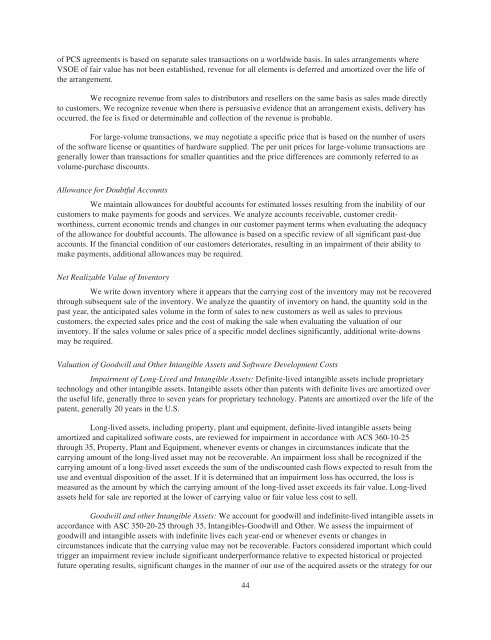

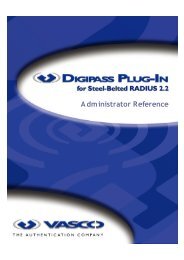
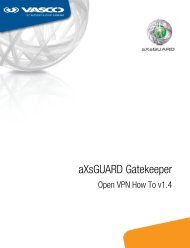
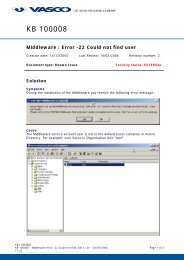
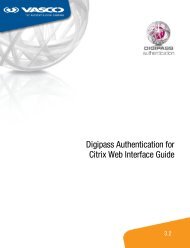
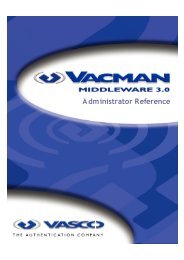
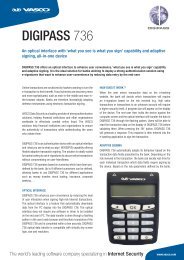
![KB [100006] - Vasco](https://img.yumpu.com/12539350/1/184x260/kb-100006-vasco.jpg?quality=85)

